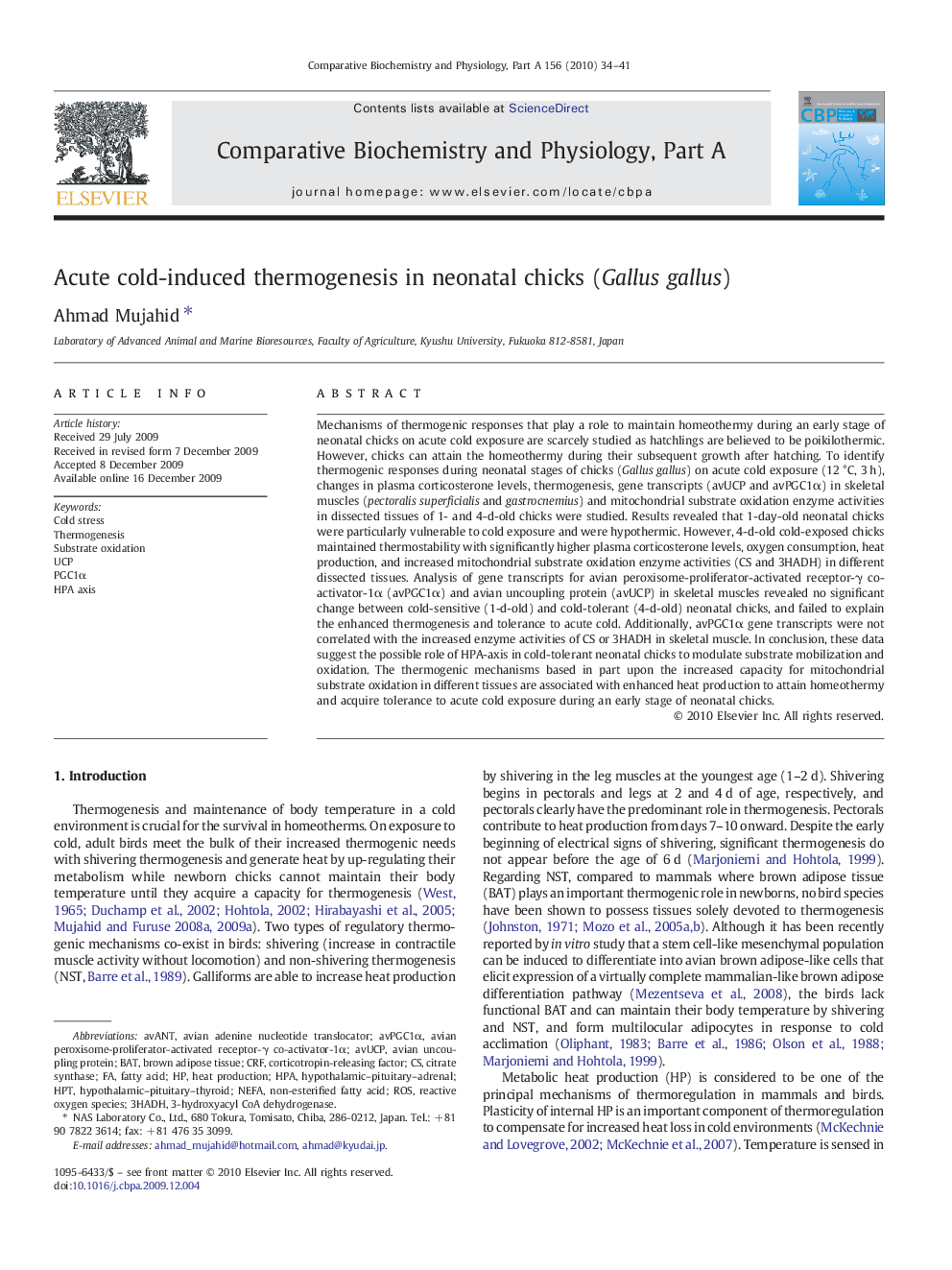| کد مقاله | کد نشریه | سال انتشار | مقاله انگلیسی | نسخه تمام متن |
|---|---|---|---|---|
| 1972700 | 1060287 | 2010 | 8 صفحه PDF | دانلود رایگان |

Mechanisms of thermogenic responses that play a role to maintain homeothermy during an early stage of neonatal chicks on acute cold exposure are scarcely studied as hatchlings are believed to be poikilothermic. However, chicks can attain the homeothermy during their subsequent growth after hatching. To identify thermogenic responses during neonatal stages of chicks (Gallus gallus) on acute cold exposure (12 °C, 3 h), changes in plasma corticosterone levels, thermogenesis, gene transcripts (avUCP and avPGC1α) in skeletal muscles (pectoralis superficialis and gastrocnemius) and mitochondrial substrate oxidation enzyme activities in dissected tissues of 1- and 4-d-old chicks were studied. Results revealed that 1-day-old neonatal chicks were particularly vulnerable to cold exposure and were hypothermic. However, 4-d-old cold-exposed chicks maintained thermostability with significantly higher plasma corticosterone levels, oxygen consumption, heat production, and increased mitochondrial substrate oxidation enzyme activities (CS and 3HADH) in different dissected tissues. Analysis of gene transcripts for avian peroxisome-proliferator-activated receptor-γ co-activator-1α (avPGC1α) and avian uncoupling protein (avUCP) in skeletal muscles revealed no significant change between cold-sensitive (1-d-old) and cold-tolerant (4-d-old) neonatal chicks, and failed to explain the enhanced thermogenesis and tolerance to acute cold. Additionally, avPGC1α gene transcripts were not correlated with the increased enzyme activities of CS or 3HADH in skeletal muscle. In conclusion, these data suggest the possible role of HPA-axis in cold-tolerant neonatal chicks to modulate substrate mobilization and oxidation. The thermogenic mechanisms based in part upon the increased capacity for mitochondrial substrate oxidation in different tissues are associated with enhanced heat production to attain homeothermy and acquire tolerance to acute cold exposure during an early stage of neonatal chicks.
Journal: Comparative Biochemistry and Physiology Part A: Molecular & Integrative Physiology - Volume 156, Issue 1, May 2010, Pages 34–41